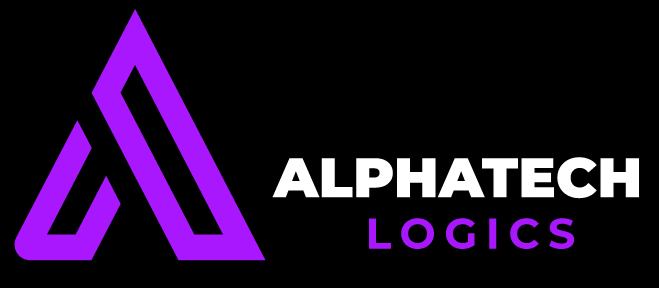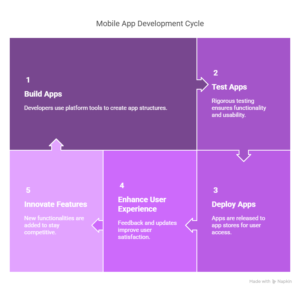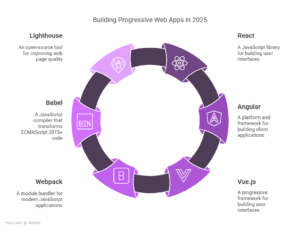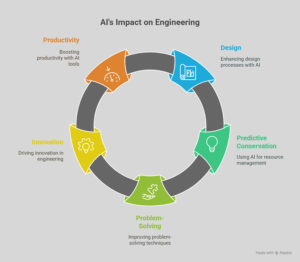The Generational Shift: Generative AI Tips for CTOs
In the ever-evolving landscape of technology, few advancements have captured the imagination and potential of businesses as profoundly as generative AI. From creating human-like text to generating realistic images, music, and even code, generative AI is reshaping industries and redefining what’s possible. For Chief Technology Officers (CTOs), this represents both an unprecedented opportunity and a formidable challenge. As the torchbearers of innovation within their organizations, CTOs must navigate this generational shift with strategic foresight and adaptability.
Here are some key tips for CTOs to harness the power of generative AI effectively:
1. Understand the Technology Deeply

Generative AI, powered by models like GPT, DALL·E, and Stable Diffusion, is not just another tool—it’s a paradigm shift in how machines interact with data and creativity. CTOs must invest time in understanding the underlying mechanics of these models, including their strengths, limitations, and ethical implications. This knowledge will enable informed decision-making and help avoid pitfalls such as bias, misinformation, or over-reliance on AI-generated outputs.
2. Identify High-Impact Use Cases

Generative AI is not a one-size-fits-all solution. CTOs should work closely with business leaders to identify areas where generative AI can deliver the most value. For example:
– Content Creation: Automating marketing copy, blog posts, or product descriptions.
– Software Development: Assisting with code generation, debugging, or documentation.
– Customer Support: Enhancing chatbots and virtual assistants for more natural interactions.
– Design and Creativity: Generating visual assets, prototypes, or even entire marketing campaigns.
By focusing on high-impact use cases, CTOs can demonstrate tangible ROI and build momentum for broader AI adoption.
3. Prioritize Data Quality and Governance

Generative AI models are only as good as the data they’re trained on. CTOs must ensure that their organizations have robust data governance frameworks in place. This includes:
– Data Quality: Ensuring clean, relevant, and diverse datasets to train or fine-tune models.
– Data Privacy: Complying with regulations like GDPR and ensuring sensitive information is not inadvertently exposed.
– Bias Mitigation: Actively working to identify and reduce biases in training data to prevent skewed or harmful outputs.
4. Build a Culture of Experimentation

Generative AI is still in its early stages, and its full potential is yet to be realized. CTOs should foster a culture of experimentation within their teams, encouraging innovation and calculated risk-taking. This might involve:
– Setting up sandbox environments for testing AI models.
– Hosting hackathons or innovation challenges focused on generative AI.
– Collaborating with startups, academia, or industry consortia to stay at the cutting edge.
5. Address Ethical and Societal Implications
Generative AI raises significant ethical questions, from intellectual property concerns to the potential for misuse in creating deep fakes or spreading disinformation. CTOs must take a proactive role in addressing these issues by:
– Establishing clear guidelines for the ethical use of AI within the organization.
– Engaging with policymakers and industry groups to shape responsible AI standards.
– Educating employees and stakeholders about the risks and responsibilities associated with generative AI.
6. Invest in Talent and Upskilling

The success of generative AI initiatives hinges on having the right talent. CTOs should focus on:
– Hiring AI specialists, including data scientists, machine learning engineers, and ethicists.
– Upskilling existing teams to work with generative AI tools and frameworks.
– Partnering with external experts or consultants to fill knowledge gaps.
—
7. Balance Innovation with Security

Generative AI introduces new security challenges, such as the risk of adversarial attacks or the misuse of AI-generated content. CTOs must ensure that security is baked into every AI initiative, from model development to deployment. This includes:
– Implementing robust access controls and monitoring systems.
– Regularly auditing AI systems for vulnerabilities.
– Staying informed about emerging threats and best practices in AI security.
8. Plan for Scalability

As generative AI proves its value, demand for its applications will grow exponentially. CTOs must plan for scalability from the outset, ensuring that their infrastructure, processes, and teams can handle increased workloads. This might involve:
– Leveraging cloud-based AI platforms for flexibility and scalability.
– Adopting modular architectures that allow for easy integration of new AI capabilities.
– Building partnerships with AI vendors to access cutting-edge tools and resources.
9. Communicate the Vision

Generative AI can be intimidating for non-technical stakeholders. CTOs must act as evangelists, clearly articulating the potential of generative AI while addressing concerns and managing expectations. This involves:
– Creating compelling narratives around AI-driven transformation.
– Demonstrating quick wins to build confidence and support.
– Maintaining transparency about the limitations and risks of generative AI.
10. Stay Ahead of the Curve

The field of generative AI is advancing at breakneck speed. CTOs must stay informed about the latest developments, from new model architectures to emerging applications. This requires:
– Regularly attending industry conferences and workshops.
– Subscribing to leading AI research publications and forums.
– Networking with peers to share insights and best practices.
Conclusion
The rise of generative AI marks a generational shift in technology, one that promises to unlock new levels of creativity, efficiency, and innovation. For CTOs, the challenge lies in navigating this shift with a balanced approach—embracing the opportunities while mitigating the risks. By understanding the technology, prioritizing ethical considerations, and fostering a culture of experimentation, CTOs can position their organizations at the forefront of this transformative wave. The future belongs to those who can harness the power of generative AI responsibly and effectively—will your organization be among them?





